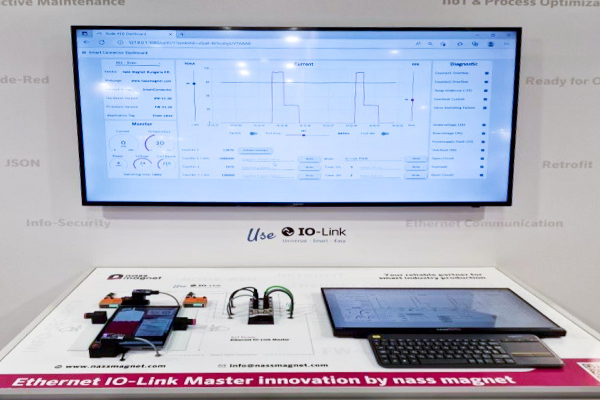Explosion protection is
when there’s no bang – or is it?
At the plants of the Company group nass magnet, a new solenoid coil is currently being developed to power valves in the “System 13” modular system in areas at risk of gas or dust explosions.
Categorically, the explosion protection of devices requires the application defined ignition protection types. The ignition protection type “Ex d”, which has never before been used at nass magnet, was selected for the gas explosion protection, while the familiar ignition protection type “Ex t” was selected for the dust explosion protection.
In explosion protection, the designation “Ex d” describes the ignition protection type “flameproof enclosure”. In concrete terms, this means that a flammable gas mixture can enter the device and explode when ignited – but no flammable sparks can escape. As a result, the flammable gas atmosphere on the outside is not ignited. To achieve this, the housing must be adequately robust and may only have a very small gap; in other words, the housing itself forms an enclosure.
In any case, it was a challenge to develop a highly stable and robust solenoid coil that is adequately secure. For this reason, the design was based on a metal housing from the outset. This was the first new design in a long time to feature a full metal housing in nass magnet’s modular system.
A special metal
The new solenoid coil consists of a ferritic, rust-free machining steel that performs several functions at once. It is characterised by its excellent machinability, outstanding corrosion-resistance and good magnetic properties.
The magnetisable, ferritic structure ensures that the outer housing becomes part of the magnetic circuit of the coil, while avoiding the yoke that would usually be required on the inside. Meanwhile, the chemical composition provides excellent corrosion protection, making it ideal for use in a harsh environment.
And this environment holds more than meets the eye
The solenoid coils can be used in exposed refineries, oil rigs and chemical plants with ambient temperatures of -60°C to +80°C, in various explosion protection temperature classes. This means, for example, that when used in the temperature class T6, the maximum surface temperature of the solenoid coil may not exceed +85°C.
Here too, the metal housing proves useful, as its high thermal conductivity ensures that as much heat as possible dissipates outwards to prevent the coil from overheating.
The solenoid coils will be available with a M20x1.5 or NTPF thread connection, making them suitable for worldwide use. This interface is often selected so that customers can select their own cable entry system, depending on the application and the cable that will be used. Optionally, the coils can be ordered with a cable gland included.
Expansion of modularity
A special feature that we can be proud of is the compatibility of the coil with our existing modular system. The solenoid coil can be operated on almost any armature assembly in “System 13”. This saves the customer from having to create new interfaces and allows them to add Ex d to their existing System 13 without any issues.
For the first time, it will also be possible to use an armature assembly of performance class 2 in temperature class T6 (+85°C). At a limited ambient temperature, it is even possible to use an armature assembly of performance class 3: a special feature that the existing modular system did not have. Armature assemblies of performance class 3 are operated in temperature class T4 (+135°C), while armature assemblies of performance class 4 are operated in temperature class T3 (+200°C).
Nico Kunze
Product Conformity and Optimisation
nass magnet GmbH












